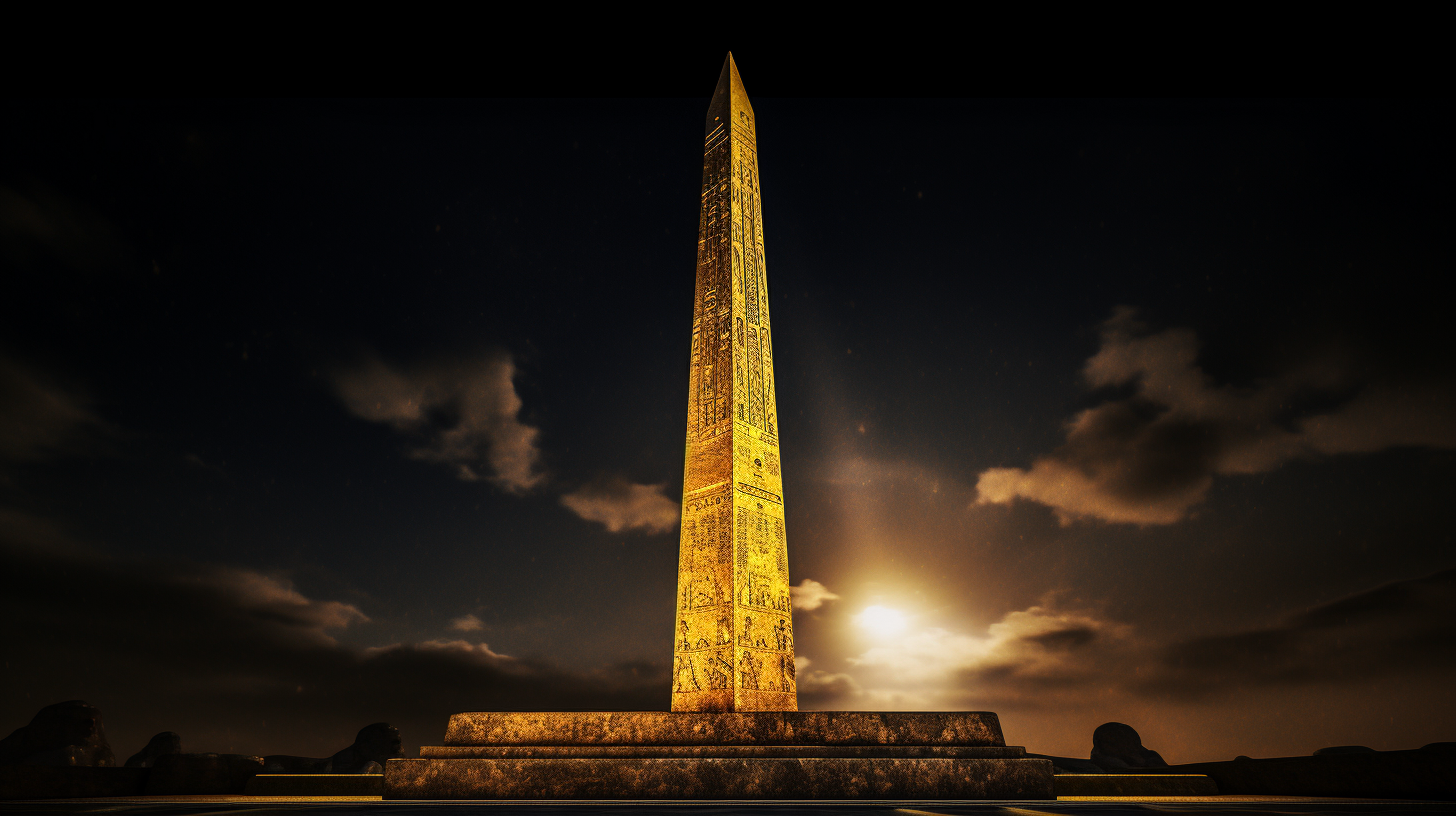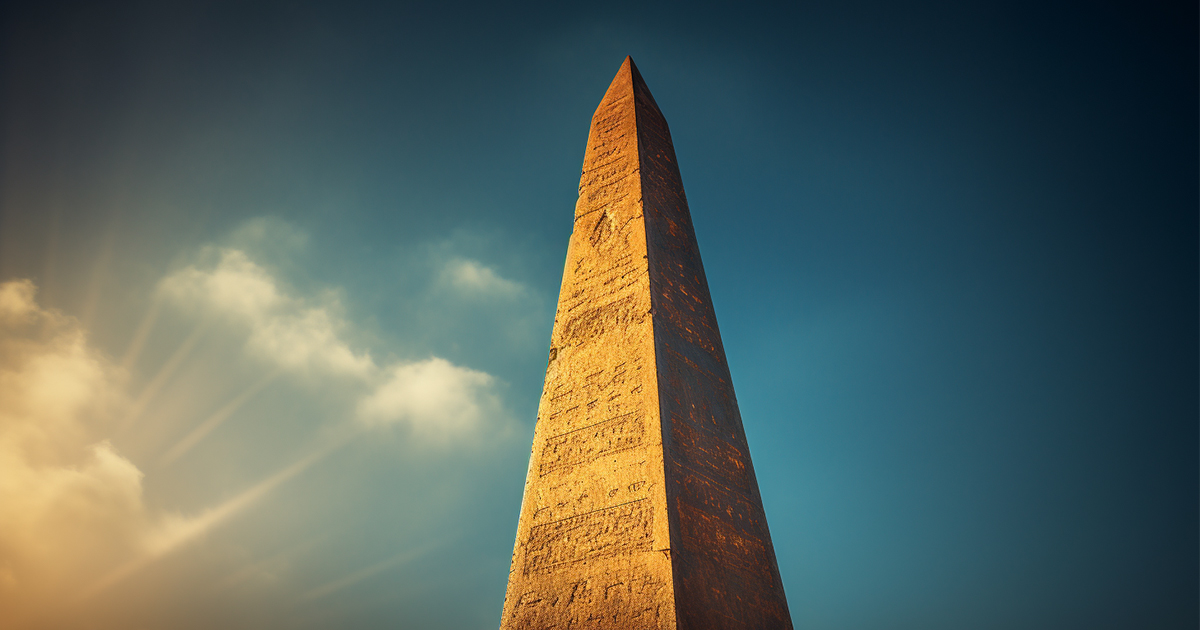When reflecting on ancient societies, the mind often conjures images of majestic architectural marvels such as the Egyptian pyramids or the Great Wall of China. Yet, amidst these renowned wonders lies a lesser-known yet captivating structure shrouded in mystery: the obelisks.
These imposing four-sided monuments have captivated the curiosity of historians and, more recently, theorists who propose a fascinating tie to advanced technology. Let us embark on a journey into the realm of ancient obelisks and unveil the mesmerizing enigmas they safeguard.
The Enduring Legacy of Obelisks Throughout the Ages
Rising proudly like stoic sentinels across the Egyptian landscape, obelisks have intrigued minds for centuries. The world’s oldest surviving obelisk, dating back to around 1900 B.C., stands majestically just 20 miles northeast of the iconic Giza Pyramid Complex.
The term “obelisk” finds its roots in the Greek word “obeliskos,” signifying a “pointed pillar.” These towering edifices are distinguished by their slender, tapering design culminating in a pyramidion atop.

In ancient Egypt, hieroglyphs graced the four facets of these monolithic stones, often preserving historical narratives of battles, momentous occasions, or the region’s lore. Though the obelisks came centuries after the standing stones of Carnac, Brittany, they shared a vital commonality: being monoliths hewn from a single block of red granite.
The Mystique of Quartz Crystal Energies
What distinguishes Egyptian obelisks is the infusion of red granite with minuscule quartz crystals. This distinctive composition is believed to imbue the obelisks with a unique vibrancy.
Ancient cultures recognized this energy phenomenon, viewing obelisks as living entities akin to the even more ancient standing stones. This connection between antiquity’s inhabitants and these towering structures raises thought-provoking queries regarding their purpose.
Ancestral Links to the Divine Realm
Ancient astronaut proponents posit that the Egyptians grasped the obelisks’ potential in forging a profound communion with the divine. The upward-reaching form of the obelisk, reminiscent of a cathedral, symbolized a celestial tether. Crowning an obelisk was a special stone – the capstone, fashioned as a pyramid and hewn from finely polished granite embellished with hieroglyphs.
Most notably, this gilded capstone, aglow in pure gold, created a mesmerizing spectacle when sunlight danced upon it, visible for miles around. This capstone served as the conduit through which mortals communicated with the deities.
Egypt’s Reflection of Celestial Harmonies
Ancient chronicles recount Egypt’s endowment with “heavenly energies,” mirroring the celestial grandeur on Earth. This principle, often encapsulated as “as above, so below,” hints at a nexus between the heavenly and earthly spheres. While conventional scholars interpret this metaphorically, ancient astronaut proponents offer an alternative interpretation.
Theory of an Energy Grid and Obelisks
According to these proponents, obelisks weren’t merely symbols but integral components of an expansive wireless energy grid that also encompassed the pyramids. Drawing parallels with contemporary technology, they liken this energy transference to the concept of charging a device wirelessly. In this proposed scenario, extraterrestrial entities might have replenished their vessels using these obelisks and standing stones.
Moreover, the pyramids potentially served a akin function, hinting at the existence of incredibly advanced technologies beyond our contemporary comprehension.
The Potency of Quartz Crystal Dynamics
The heightened concentration of quartz crystal within the Great Pyramid’s walls further bolsters this hypothesis. Collectively with other ancient edifices such as obelisks and pyramids, it’s theorized that a global network of wireless energy transmission could have been established.
Strategically placing these obelisks and standing stones worldwide, in conjunction with the pyramids, might have facilitated the transmission and reception of energies.
A Global Matrix of Energy Distribution
These ancient standing stones may have functioned as antennae and power relays, potentially enabling a global power distribution network. Conveyances, submarines, and diverse electrical devices conceivably drew power directly from the atmosphere, harnessed and disseminated by the pyramids and obelisks.
Watch this video for more insights
In Summary
To conclude, the enigmatic obelisks of ancient Egypt provide a captivating peek into a realm where advanced technology converges with celestial connections. While traditional interpretations perceive them symbolically within religious and cultural contexts, the suppositions of ancient astronaut enthusiasts beckon us to envisage a world where these colossal monuments played an integral role in fueling a civilization that eludes full comprehension.
Whether viewed as symbolic emblems or as technologically sophisticated entities, the enduring allure of these monumental obelisks and the enigmas they guard remains undisputed.
